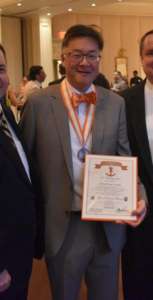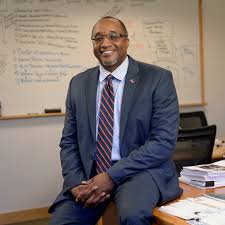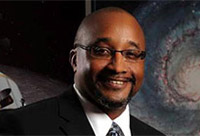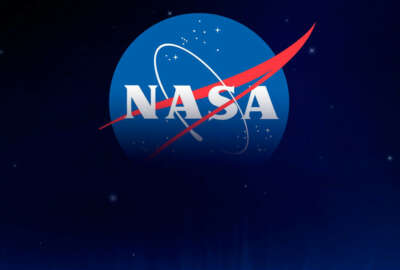
Exclusive
NASA, Army technology leaders retire in time for summer
Gary Wang, the Army’s deputy CIO, retired after 35 years in government and Jerry Davis will retire from NASA Ames in July.

Two long-time and well-respected federal IT executives are leaving federal service.
Gary Wang, the deputy chief information officer/G6 for the Army, retired after 35 years in government May 31 while Jerry Davis, the chief information officer and director of IT at NASA Ames Research Center in California, will retire effective July 7.
Wang’s decision leaves a big hole in the career staff at the Army’s CIO/G6 office with only Tom Sasala, the director of the Army Architecture Integration Center and chief data officer, as its senior most non-uniformed staff member.
‘Weaponizing the network’
Wang has been deputy CIO since 2014 and spent most of his career working for the Navy in civilian leadership roles.
During his time as deputy CIO, Wang helped usher the Army through several modernization efforts, including the final steps of enterprise email and the initial starts to move the service to the Joint Regional Security Stacks (JRSS).
In a presentation before the AFCEA Northern Virginia chapter in mid-May, Wang highlighted several ongoing initiatives that his replacement will need to pick up on, including consolidating network circuits and moving toward enterprise licenses for software.
“We are weaponizing the network to conduct offensive and defensive operations and we are using it for business things during the day,” he said. “Everything we do in CONUS depends on those networks, yet we have functional parts of the Army that continue to build their own separate networks. They don’t understand security and when it hits the fan, they ask for help. The idea is to converge some of those existing networks. Three years ago we started talking about convergence and getting all the operational networks behind the JRSS. We are starting to do that now.”
He said Army CIO/G6 Lt. Gen. Bruce Crawford’s priorities include:
- Readiness to ensure the Army is prepared for the current and future battles from a technology perspective.
- Modernization, including the networks, JRSS, building capacity and getting rid of old technology, including routers and switches, and moving to voice, video and text in the cloud.
- Shaping the force to train the workforce to support the emerging technologies of today and what’s coming in the future.
- Cyber policy focused on using a risk management framework to assess risk for programs and hold leaders accountable. “There are things we are looking at to apply automation to, and streamline processes,” Wang said.
- Baseline enterprise initiatives like the JRSS and services in the cloud.
Wang began his federal career in 1983 at the Naval Underwater Systems Center as a project engineer. He later moved to the Navy’s Intelligence, Surveillance, Reconnaissance, and Information Operations where he was a program manager responsible for developing and acquiring cryptologic, meteorological, operational effects and intelligence programs.
Wang joined the Senior Executive Service in 2005, serving in several roles at the Space and Naval Warfare Systems Command (SPAWAR), including director of Corporate Operations and command information officer, chief technology officer, and director of the Science, Technology and Engineering Department at SPAWAR Systems Center Pacific.
Wang earned his bachelor’s of science degree in electrical engineering from the University of Texas at Austin.
Sources say Wang is taking time off to travel with his family and has no known plans after the summer.
Always a patriot

Over at NASA, Davis’s decision is a little more surprising as he elected to enter into deferred retirement, according to an email sent to staff last Friday and obtained by Federal News Radio.
Deferred retirement is for employees who have reached the minimum retirement age based on the year they were born and have at least 10 years of federal service.
“I have a tremendous and profound respect for all of the staff in Code I [Ames IT organization]. During my first all hands I was very explicit when I said ‘no one works for me, we all work together.’ I have kept true to that rule ever since,” Davis writes in his email to staff. “Also, as I have said many times in the past, ‘In our haste, we often forget to say thank you.’ I must say thank you for propping me up and letting me be the face of the organization … Thank you for putting the center first before yourselves. Thank you for doing something bigger than yourselves.”
Davis said he would remain the San Francisco area to continue to work on what he called, “in support of the science behind Moore’s law.”
“I have fought the good fight, I have finished the race, I have kept the faith. I have made sacrifices on behalf of our nation and when my country called, I showed up without hesitation. I have been a good patriot,” he said. “My federal time is over, but the memories are forever and I will always be a patriot.”
He joined the CIA in 1994 and later joined the Education Department in 2004.
Davis also served as chief information security officer at the Veterans Affairs Department and NASA headquarters before moving to become the Ames CIO in 2013. Once there, he worked on modernizing Ames’ network while focusing on areas such as the convergence of cyber-physical systems.
“If I thought that being at NASA the first time opened doors for me, then coming to Ames opened an entire universe of possibilities and opportunities,” he wrote. “I have been able to use this incredible platform to reach the underserved and relay to them that anything is possible; that the persistent pursuit of passion is all one needs.”
During his career, Davis wasn’t one to shy away from speaking out about what he thought was right when it came to federal technology. He came out publicly around VA’s cybersecurity troubles including alleging the agency was “rubber stamping” system cyber approvals.
One of his main priorities has been to improve NASA’s cybersecurity. He introduced a concept called Gryphon X to help secure critical infrastructure in a more active and proactive way, and also push the space agency back toward the front of the innovation pack.
“It’s not the technology that makes Ames special, rather it is its people,” he wrote. “People who definitely are in persistent pursuit of their passions and because of this, Ames can do just about anything. It is truly an amazing place full of amazing people.”
Read more of Reporter’s Notebook
Copyright © 2025 Federal News Network. All rights reserved. This website is not intended for users located within the European Economic Area.
Jason Miller is executive editor of Federal News Network and directs news coverage on the people, policy and programs of the federal government.
Follow @jmillerWFED
Related Stories





